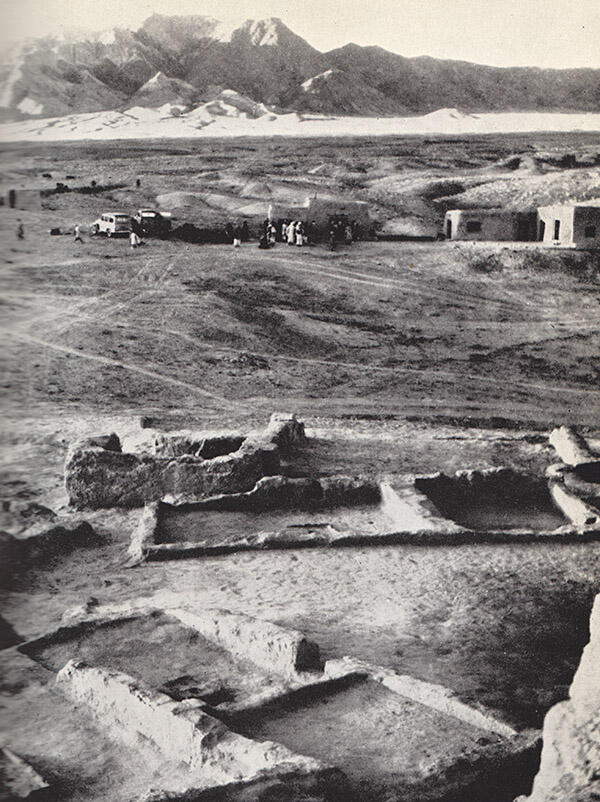"The inspection of Mound B a few hundred yards away was left for another day, and we walked down to the square mud-pise boxes that were our cabins. In a hollow between my hut and the main mound an oblong was outlined on the ground in ancient potsherds, with a little bulge in the middle, facing west. This was the Masjid in which the more pious of the workmen said their prayers at mid day and evening. To the south a dark line in the stony earth, running east to west, was the bed of the dried-up Kishk-i-Nakhod Rud from which the valley took its name. On the far side of the river bed lay a long strip of green—Mundigak village, the “village of the small mound” from which our camp was named. Did that mean that the village itself was built on the site of a smaller settlement than the one we were excavating, I wondered? Out of sight to the north-east was the larger village of Sheerga and it was from these and smaller hamlets in the valley that our workmen were to come, walking daily any thing up to seven miles in each direction.
After tea, Jacques clapped on his straw hat, took a handful of shot and together with Achour shouldered a gun and went hunting for our supper, L’Idiot [their dog] trotting happily at their heels. An hour later they returned with five plump pigeons.
Already the Mess had been transformed with yellow check curtains at the windows and over the open shelves on the cupboards. A charpoy (bed) had been placed along one wall and covered with a striped rug. On the wall behind the string bed a reed mat had been nailed as a headrest and above this were a couple o f colourful Picasso- like sketches by Jacques. A storage jar several thousand years old and some three feet high, stood in the corner filled with feathery reeds from the groves we had passed on the road from Kandahar. Mad Amin had filled the hurricane lamps for the cabins and the oil lamp for the mess was already throwing out a brilliant yellow light" (Time off to Dig, London, 1961, pp. 58-59).
More pictures of Mundigak

